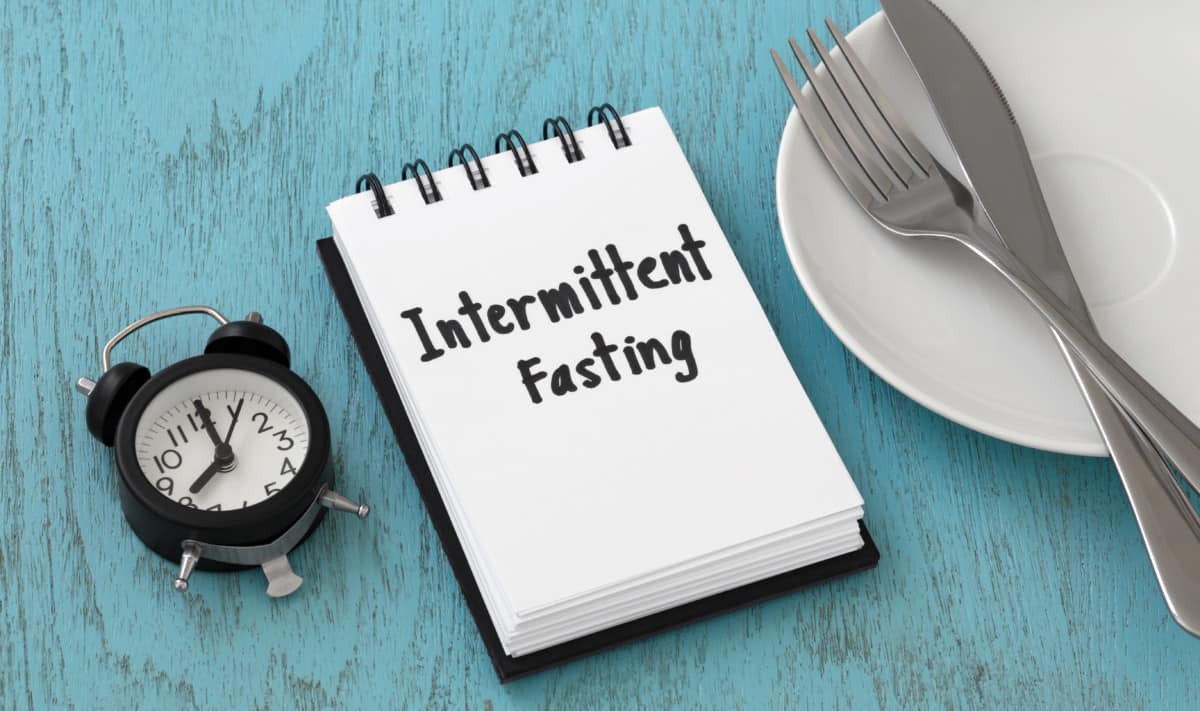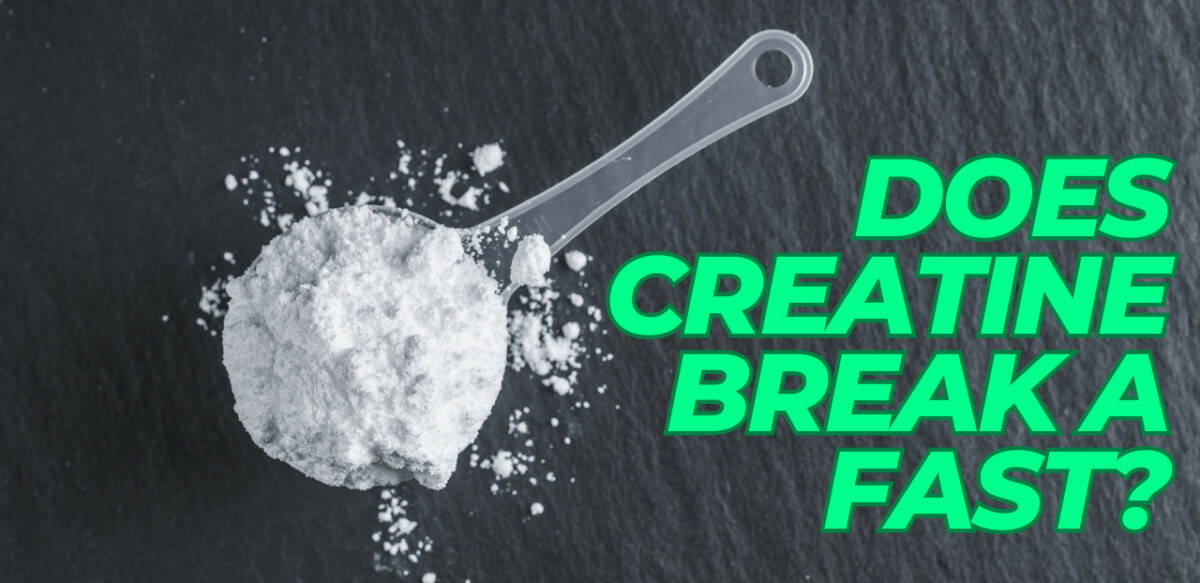Fasting every other day is also known as Alternate Day Fasting and it’s becoming an increasingly popular diet with its effectiveness for weight loss. Many are starting to prefer following an intermittent fasting diet since they don’t have to worry about counting calories and totally restricting food choices.
Essentially all you have to do is not eat one day and then you can eat the following day. Fast, feast, fast, feast. Easy enough right?
Many people have found this helps them lose weight and they lose it fast. You’ll also get health benefits other than weight loss like reversing aging, improving blood glucose control, lowering insulin, and boosting your mood.
Following an intermittent fasting schedule that alternates between fasting and non-fasting days has another benefit. You’ll still be able to eat some of your favorite foods on your non-fasting days and still lose weight.
Here you’ll discover the pros and cons of Alternate Day Fasting along with a complete guide on how to use it for maximum effectiveness and results.
Benefits of Fasting Every Other Day (And the Cons)

This is basically a form of intermittent fasting that uses an alternating schedule of non-fasting and fasting days. But on your fasting days that doesn’t mean you can’t eat any calories. A common modified version of this is eating up to 500 calories on fasting days.
Alternate Day Fasting is great for weight loss but there are more health reasons to do it. It’s also been found to be highly effective for improving symptoms associated with cardiovascular disease (1).
You’ll also lower insulin resistance and have better blood glucose control with Alternate Day Fasting (2). Both of which are vital to lowering your fat mass. Many experts believe the hormone insulin is responsible for much of the skyrocketing obesity and type 2 diabetes rates today (3,4).
Researchers also discovered fasting is better for lowering “hunger hormones” compared to a daily calorie restriction diet. Alternate Day Fasting increases the satiety hormone leptin while helping to decrease the hunger hormone ghrelin (5).
This boosts your weight loss since you’ll naturally eat fewer calories resulting in a lower calorie intake for the day. And eating fewer calories is one of the foundations of weight loss and weight maintenance (6).
One of the problems with calorie restriction diets is many end up binge eating after constantly cutting back on what they eat. Researchers found Alternate Day Fasting was better at this (7). When participants break their fast they didn’t eat nearly as much as those on a calorie-restricted diet.

A study published in Cell Metabolism found Alternate Day Fasting improved markers of aging. Fasting group participants lost a significant amount of weight and lowered the risk of cardiovascular disease (8).
But the problem with Alternate Day Fasting is the hunger pains you can get. You might have spots of mood swings, irritability, and crankiness on your fast days. This can make it difficult to stick to and even tougher on the people around you!
The good news is you will adapt to it. This study found the first two weeks are going to be the hardest when you’re following an alternating fasting schedule. After that, the hunger pains go down significantly (9). Researchers have also found Alternate Day Fasting results in an increased feeling of fullness (10).
Another problem with Alternate Day Fasting is the research finding it has a high dropout rate. One study found only 69% ended up sticking with the diet until the end. Participants ended up feeling uncomfortably hungry and irritable on their fasting days. This resulted in them feeling dissatisfied with the diet (11).
Some people never got accustomed to the discomforts on fasting days. But in this review study researchers found people are more likely over time to stick to it compared to the calorie restriction group (12).
This ended up resulting in greater fat loss and more muscle mass in study volunteers than those following a daily calorie restriction diet. And since they were more likely to stick with it in the long run they’d end up having better results too.
How to Alternate Day Fast

Alternate Day Fasting isn’t rocket science. Just eat what you’d normally eat one day and then fast the next day.
On your non-fasting days, you’re still going to have to keep your calories in check. It’s always better to eat healthier food choices on the days your non-fasting days instead of going crazy and eating a whole pizza pie.
On fast days, you can only have zero-calorie beverages such as black coffee or unsweetened tea.
But the modified approach to the fasting day allows you to have up to 500 calories. This study found being able to have 500 calories on a fasting day was much more tolerable for the majority of people (13). I’d try to have it in just one meal at lunchtime if you’re going to follow this modified version. This way you cut yourself off for the rest of the day.
The theory is if you spread those 500 calories throughout the day you’ll be more likely to end up going over your limit. People have found after a couple of weeks eating anything on your fasting day can make it way harder than if you didn’t eat anything at all.
Yet this recent 2017 study by JAMA Internal Medicine found it’s hard to have just one meal in a day than it is to not eat it all (14). Funny enough the researchers compared it to peeing. Once you start peeing it’s hard for you to stop. The same goes for eating when you’re hungry. Once you start eating it can become hard to stop.
This study found the meal timing of your single meal doesn’t really matter much (15). If having dinner was more satisfying for you then this would be encouraging to keep fasting until the next day. And they found even smaller meals throughout the day are doable as long as you don’t go over your daily calorie limit. The researchers found this helps to increase the tolerability and long-term adherence to Alternate Day Fasting.
Just be careful not to go too crazy on your non-fasting days by binge eating. The more you use Alternate Day Fasting the more your body will adjust to it and the easier it’ll become.
Boost Your Fasting Every Other Day Results

The good news with Alternate Day Fasting is it can be very effective for weight loss. Studies have backed up these claims too.
This study by the JAMA Internal Medicine followed 400 obese women and place them on a 5:2 fasting diet (16). They ended up losing 5.5% of their body weight but they did end up regaining 1.8% by the end of the year.
The 5:2 fasting schedule uses two fasting days during the week and 5 non-fasting days. Researchers in this study also found additional health benefits to Alternate Day Fasting. These include reductions in blood pressure, blood sugar, and insulin levels.
This study in Nutrition Journal found Alternate Day Fasting to be effective for losing weight as well as for heart protection (17). The participants in this study lost 12 pounds more compared to the control group in only four weeks.
Another 2014 study found Alternate Day Fasting to be effective for lowering oxidative stress in the body (18). This in effect helped to lower inflammation in the body. These are two big factors in helping you stay looking and feeling young. You’ll also be increasing your longevity.
If you’re middle-aged then this study also found it to be highly effective for your age range (19). But that doesn’t mean if you’re younger or older it won’t work for you. The researchers just found it worked best for middle-aged people.
One more study found participants in Alternate Day Fasting were able to double their weight loss by adding in cardio workouts (20). So even going for a brisk walk, bike ride or jog can really boost your results. That’s because your body has to tap into your fat stores for energy since you’re not consuming any calories.
Crazy enough the researchers also discovered cardio in addition to alternate fasting resulted in SIX times the weight loss you’d normally get from doing just endurance training.
Alternate Day Fasting Guide

On your fasting days, you should not try to put any calories into your body. That way you have a true fast. But that doesn’t mean you still can’t get the vast majority of the benefits with some approved fasting drinks…
Some of the calorie-free beverages you can have include:
- Keto Elevate (C8-MCT powder enhances fat burning)
- black coffee
- unsweetened teas
- water
- BCAAs (amino acids prevent muscle breakdown)
- Fasting Teas
Adding Keto Elevate to your morning coffee can enhance fat loss with its powerful MCTs. These MCTs are converted into ketones in your body signaling for your fat-burning furnace to crank up.
Get Keto Elevate (Save 51% OFF)
I like to take some zero-calorie Branched Chain Amino Acids (BCAAs) to help preserve muscle mass (21). BCAAs are the building blocks of protein but without calories. This way you can still feed your muscles without breaking your fast.
But if you have a lot of weight to lose then BCAAs are the least of your concerns. Stick with water, coffee, tea, and the MCTs above.
Another trick I use while fasting is to chew gum. Some people think chewing gum can cause an insulin spike but according to this study that isn’t the case (22).
When you’re following a fasting plan that uses an alternating schedule it’s a good idea to try and keep your weekends free and open. Family and friend gatherings can make it hard to stick to your fasting days.
If you’re following a modified fasting day then keep your calories limited to 500-600 per day. Going on a full fast just starting out can be extreme if you’re not already used to some level of fasting. If you’re a beginner then following the modified version of Alternate Day Fasting is a wiser choice starting out.
It’s best to eat a light meal like soup for those 500 calories. Eating something high in sugar or carbs can spike your blood sugar and insulin. This could cause you to crave more food which will make it harder to get through your fast.
Then on your fasting days try to follow your normal eating pattern as long as it isn’t over the top bad. Eating real whole foods and keep your calories within a normal range (1200-2000) will give you the best results. Resist all urges to binge eat on your fasting days.
This is one of the reasons why I’m not too big on Alternate Day Fasting. It doesn’t provide a consistent schedule. This can result in erratic eating patterns for some people.
Fasting to Lose Belly Fat

One of the big advantages of an Alternate Day Fasting Plan is the preservation of lean body mass (23). Having muscle on your body helps to give you a toned and attractive body look.
This is a much more appealing body look than the “skinny fat” look. The latter happens when you’re just restricting calories and you end up losing muscle mass with the weight loss. The goal should be to improve your body composition by lowering the fat on your body while preserving and building lean muscle.
Muscle has also been found to increase your metabolism so you’re able to burn fat around the clock (24). Eating a high protein diet will encourage the building of muscle along with strength training (25). Be sure to be consuming at least 1g of protein per kg of body weight per day. If you have trouble reaching these goals then take a low-carb protein powder.
This study found Alternate Day Fasting to be effective in lowering belly fat (26). You’ll lose belly fat while also getting many other health improvements. Belly fat isn’t only unsightly but it’s also linked to many health problems. The big ones include heart disease, type 2 diabetes, and cancer (27).
Belly fat is a very stubborn area to get rid of for most people. But the good news is adding intermittent fasting into your diet can be effective in helping you get rid of those last pounds of fat on your stomach. You can find more ways to get rid of belly fat naturally here.
Fasting Doesn’t Slow Your Metabolism

Some people out there think fasting for 24 hours will put your body into “starvation mode.” This is when your body slows down your metabolism and prevents you from maximizing the calories you can burn.
When you’re not eating enough calories your body wants to preserve its own energy source in case of a famine. Your body responds by conserving energy and reduces the number of calories it burns.
If your body is in starvation mode then it’ll keep you from burning more fat off your body. Your body will actually lose muscle first as your body works to preserve its fat stores. This is the reason why adding in BCAAs to your fasting days can keep your muscle from breaking down.
But in reality, 24 hours really isn’t long enough for your body to go into starvation mode. Eating again in a normal pattern the next day will reset your body so it doesn’t end up slowing down your metabolism.
This study found severe calorie restriction was worse in slowing down your metabolism (28). The researchers found calorie restriction slowed metabolism by 6% while Alternate Day Fasting only slowed by 1%. Interestingly enough long-term calorie restriction was found to slow down your metabolism much more than Alternate Day Fasting.
You’d be healthier and have more weight loss if you were trapped on a desert island for a long weekend without any food as long as you had water. No one from fasting 12 hours to 36 hours at a time. The human body has evolved to go long periods of time without food and should be beneficial to you in the short term.
Alternate Day Fasting Is Safe

Alternate day fasts have been found to be safe for most people wanting to lose weight and improve their health. In many ways is actually better for you than calorie restriction according to a study published in Cell Metabolism (29).
There’s much less risk of the weight bouncing back with Alternate Day Fasting compared to calorie restriction diets.
Long-term studies also discovered Alternate Day Fasting to be better at improving binge eating (30). Anyone who has ever dieted knows how hard it can be to not binge eat. But with Alternate Day Fasting researchers have found it to be much more tolerable.
This study also found the fasting group had reduced feelings of depression. Not only that but it actually improved body image perception (31).
There generally aren’t any side effects with Alternate Day Fasting other than low blood sugar levels. You could see an increase in cortisol if you’re not used to the fasting days.
Here’s what I think about Alternate Day Fasting vs. Intermittent Fasting.
I generally recommend a 16:8 fasting protocol. This is when you fast for 16 hours and then eat for the following eight.
I found this to be highly effective long-term for getting results than other fasting schedules. This will still make it tolerable so you can do it in the long run.
One of the hardest parts of fasting is just getting started and used to it. Once you get the ball rolling then it becomes easier and easier to do. But you should get better results with Alternate Day Fasting if you’re willing to stick to it.
Eventually, you can try a 7-day water fast if you want to take it up a notch and lose 10-20 pounds.
How long can you do Alternate Day Fasting?
Theoretically, you can keep doing Alternate Day Fasting forever as long as it’s working for you. I’ve known people doing it for quite a few years now and they’re still getting the benefits from doing it. In the long run, it’s more about psychologically staying motivated to keep it up.
The Last Word
The bottom line is fasting with an alternating schedule is a great way to help you lose more weight, drop belly fat, and improve your overall health.
Studies have found fasting to be effective in improving your heart health by reducing blood pressure and lowering heart rate. It’s also been found to reverse type II diabetes, and even preventing certain cancers (32).
Not to mention fasting helps to boost the killing of bad cells in your body. These bad cells can lead to cancer and heart disease. But by autophagy (killing off bad cells) you can increase your lifespan, slow the aging process and reduce oxidative stress in your body (33,34).
The only bad part with fasting is sometimes going to the hunger pains. Especially in those first two weeks. But the good news is those hunger pains will gradually go away. It’ll become much easier to get through the fasts after that.
If you have had eating disorders in the past then intermittent fasting may not be for you. It could trigger more eating disorders so it’s best to talk to your healthcare provider first (35).
I generally recommend fasting over calorie-restricted diets for faster and better long-term success. But keep in mind fasting doesn’t give you a license to eat whatever you want on your non-fasting days.
When you’re fasting with an every other day schedule you can expect to lose weight, feel better, and improve your overall. Sounds good to me.
Josh holds a Bachelor’s degree in Exercise Physiology and Nutrition Science. He’s a Certified Strength and Conditioning Specialist (CSCS) by the National Strength and Conditioning Association and he’s a Certified Personal Trainer (CPT) by American Council on Exercise. He’s worked as a Strength and Conditioning Coach at the high school and college levels. He has over 15 years of experience as a personal trainer and nutrition coach. He strives to bring inspiration and results for people to live healthier lives through smart diet and exercise.









